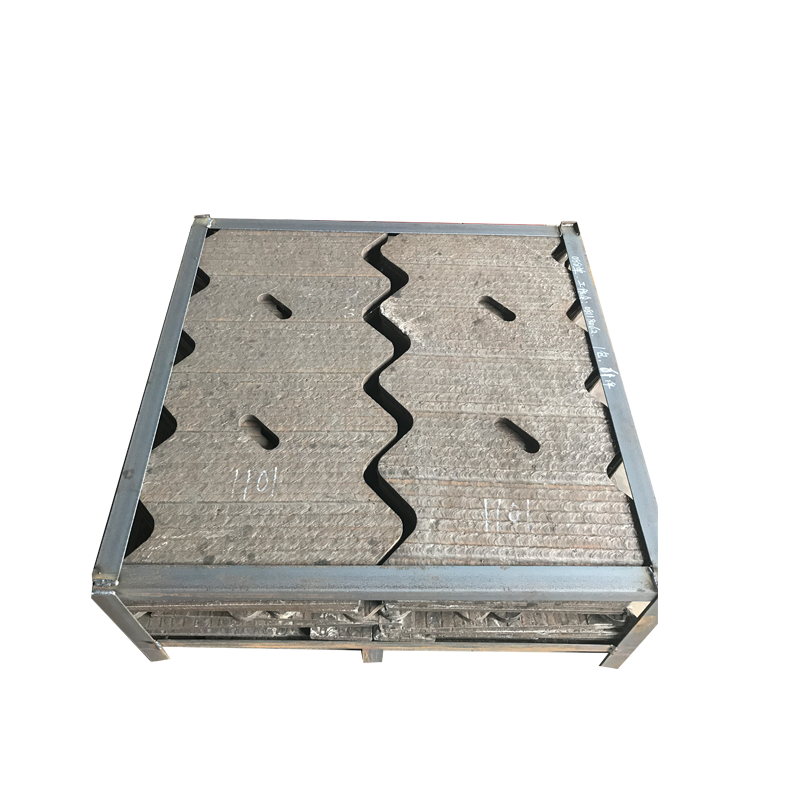- Home
-
Products
- Chromium Carbide Overlay (CCO) Wear Plates
- Chromium Carbide Overlay (CCO) Wear Pipes & Fittings
- Hardfacing Flux Cored Welding Wires
- Self-Shielded Flux Cored Welding Wire
- Gas Shielded Flux Cored Welding Wire
- Submerged Arc Flux Cored Welding Wire
- Chromium Carbide Overlay (CCO) Wear Parts
- Chromium Carbide Overlay (CCO) Wear Constructure Parts
- Chromium Carbide Overlay (CCO) Wear Hopper
- Chromium Carbide Overlay (CCO) Wear Grinding Roller
- Chromium Carbide Overlay (CCO) Wear Grinding Table
- Chromium Carbide Overlay (CCO) Wear Chute
- Chromium Carbide Overlay (CCO) Wear Rotor Blades
- Chromium Carbide Overlay (CCO) Wear Grizzly Bar
- Chromium Carbide Overlay (CCO) Wear Single Roller Teeth
- Chromium Carbide Overlay (CCO) Wear Liner
- News
- Case
- Factory Show
- Contact Us
- About Us

Seven advantages of surfacing composite wear-resistant materials
2023-11-24 11:23
1. Excellent wear resistance
The chemical composition of the alloy wear-resistant layer has a carbon content of 4 to 5% and a chromium content of 25 to 30%. The volume fraction of Cr7C3 carbides in the metallographic structure is more than 50%. The macroscopic hardness is HRC56 to 62. The hardness is HV1400~1800. Because the carbides are distributed vertically in the direction of wear, even when compared with cast alloys of the same composition and hardness, the wear resistance is more than doubled.
The wear resistance comparison with several typical materials is as follows:
(1) comparison with low carbon steel; 20~25:1
(2) comparison with high chromium cast iron; 1.5~2.5:1
2. Good impact resistance
The base plate of composite wear-resistant material is low carbon steel or low alloy. Tough materials such as stainless steel reflect the superiority of bimetal. The wear-resistant layer resists the wear of the wear medium, and the substrate bears the load of the medium, so it has good impact resistance. It can withstand the impact and wear of the high drop hopper in the material conveying system.
3. Better heat resistance
The alloy wear-resistant layer is recommended to be used under ≤600℃. If vanadium, molybdenum and other alloys are added to the alloy wear-resistant layer, it can withstand high temperature wear of ≤800℃.
The recommended operating temperature is as follows
Ordinary carbon steel substrate is recommended to be used under 380℃; low alloy heat-resistant steel plate (15CrMo, 12Cr1MOV, etc.) is recommended to be used under 540℃; heat-resistant stainless steel substrate is recommended to be used under 800℃ .
4. Good corrosion resistance
The alloy layer of the composite wear-resistant material contains a high percentage of metallic chromium, so it has certain anti-rust and corrosion resistance. It can be used to prevent coal sticking when used in coal dropping drums and hoppers.
5. Complete varieties and specifications
wear-resistant steel plate has complete specifications and many varieties, and has become a commercial series. The thickness of the wear-resistant alloy layer is 3-20mm. The thickness of the composite steel plate is at least 6mm, and the thickness is not limited. At present, the standard wear-resistant steel plate can be provided with 1200 or 1450×2000mm, and it can also be customized and processed according to the size of the drawing according to user needs. Wear-resistant steel plates are now divided into three types: ordinary type, impact-resistant type and high-temperature type. Ordering high-temperature wear-resistant and impact-resistant composite steel plates should be explained.
6. Convenient processing performance
The composite wear-resistant material can be cut, bent, welded and punched, and it can be processed into various parts that can be processed by ordinary steel plates. The cut wear-resistant steel plates can be tailor-welded into various engineering structural parts or parts.
7. Functions and features
can be welded, good wear resistance.
Get the latest price? We'll respond as soon as possible(within 12 hours)










